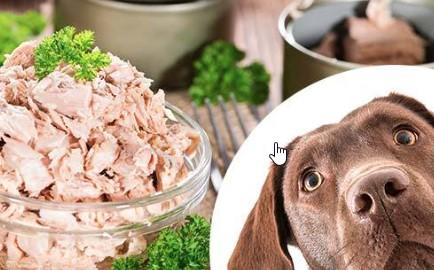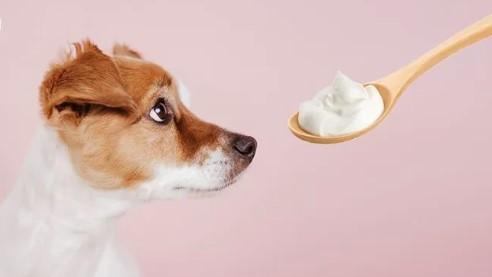
One of the most favourite flavours of people is vanilla. Whether it is the cake, ice cream, or dessert, vanilla is always in our top ingredients. Thanks to the taste it adds. Since we care for our dogs’ taste buds, we may think, Can dogs have vanilla?
Luckily, our canine friends can enjoy the flavourful taste of vanilla in their foods. However, you have to follow some safety precautions before offering this spice to them. For example, you can’t offer them the vanilla extract that we use to make pancakes and other desserts. But you can offer them vanilla beans, powder, vanilla cakes, etc.
The answer will seem complicated to you unless you go through this article.
Table of Contents
All About Vanilla
Vanilla, which belongs to the genus Vanilla, is a spice and comes from fruit-pods vanilla is a part of the orchid family and its name comes from Spanish. This spice forms in vines in forest areas and its flowers take 3 to 4 years to bloom. After pollination, the flowers mature within 8 to 10 months and turn into string beans or pods. This is what we call vanilla beans and we get the flavour vanilla inside the beans of pods. It takes 3 to 6 months to produce its flavour.
Vanilla is widely grown in the South Pacific, Indonesia, South America, the West Indies, Mexico, etc. But its main origin is Southern Mexico.
Different Forms Of Vanilla
The spice, vanilla, is available in many forms. Such as vanilla beans, vanilla powder, vanilla extract, vanilla flavouring, and vanilla bean paste.
As said earlier, vanilla beans are present in its fruit pods. You can purchase them from stores in dried and whole versions.
The vanilla powder comes from dried, ground-up vanilla beans. People use it on desserts as a sweetener.
Vanilla flavouring is the limitation of vanilla. It is formed by many ingredients, including synthetic vanillin to mimic the taste of vanilla.
One of the common household ingredients is vanilla extract. It is like a concentrated liquid. To make this extract, we need to soak the vanilla pods with alcohol in water for a couple of months. People use it commonly on baking items.
Lastly, the vanilla bean paste is the mixture of vanilla beans and its extract, i.e. concentrated extract.
Can Dogs Have Vanilla?
It depends on what type of vanilla you are offering to your dog. For instance, artificial vanilla is a no-no for dogs. It has alcohol that can worsen their health. Cooked vanilla can be a safe alternative for dogs in small quantities. The alcohol present in it evaporates when we cook it. Hence, dogs can escape the risk of alcohol from having cooked vanilla.
Vanilla extract is another harmful substitute for mammals. The reason is visible, it’s alcohol. However, some of its products are alcohol-free mentioned in the packages. Also, some products have vegetable glycerin included instead of alcohol. You may opt for such versions for your dog.
Vanilla pods are also safe for dogs in moderate quantities. They don’t contain any toxic elements.
Now comes vanilla-based products, like ice cream, yoghurt, wafers, etc.
For instance, the vanilla cake can be fine for our canine friends. This is because cakes and bakery products use vanilla for a very tiny amount. Having a bite from the vanilla cake can hardly pose any health threats to dogs. But yes, the cake should be free from chocolate, raisins, macadamia nuts, etc.
Vanilla ice cream is as safe as vanilla cake for dogs in small portions. This also has a minimal amount of vanilla.
Vanilla yoghurt that is free from artificial sweeteners can be a safe option for dogs. Vanilla wafers also fall into the same position, but it is not a healthy option.
What Are The Risks Of Having Vanilla For Dogs?
Certain products of vanilla are safe for dogs doesn’t mean they can enjoy them every day. For example, you are offering a vanilla cake or ice cream to your dog that has xylitol included.
Perhaps the dog can escape the side effects of vanilla, but not of the artificial sweetener. He may vomit, have stomach pain, diarrhoea, after eating it. Besides, too much consumption of xylitol can result in xylitol poisoning. This can lead to severe symptoms. Such as seizures, tremors, lethargy, drooling, loss of coordination, etc.
A risk associated with vanilla extract is its alcohol. Let’s say you are offering a bakery item that has artificial vanilla with alcohol. If your dog is already dealing with an upset stomach, he may get toxicity in his body after the consumption.
Eating too much vanilla cake, yoghurt or ice cream means taking too much vanilla. This can upset the stomachs of dogs, make them lose consciousness, drool, become weak, etc.
Some dogs may not consume the safe varieties of vanilla even in small amounts. These are the mammals that struggle with blood sugar levels and diabetes. The pods, beans, and any form of vanilla will cause a spike in their blood sugar levels.
When Can Dogs Have Vanilla?
Vanilla comes from flowers and is a spice. It means it is a plant-based food. Unfortunately, some dogs can’t consume plant-based foods due to allergies or previous health conditions. If your pet is one of those, please keep vanilla away from him.
This spice acts as a natural sweetener, that’s why we use it in dessert items. Along with humans, dogs also have the potential to get diabetes or blood sugar issues. If your dog is on the safe side, you may offer him vanilla or its products.
Compared to the risks, the benefits of vanilla are too few. Hence, you can’t expect any good results from adding this spice to your dog’s food. But yes, one benefit will be that your dog will enjoy the food more than before. It is because vanilla’s job is to enhance the taste.
Frequently Asked Questions: Can Dogs Have Vanilla?
Can dogs come in contact with vanilla?
Luckily, vanilla poses zero threats while coming in contact with dogs’ skin. Just make sure to wipe it up as soon as possible. It is because no ingredient can be good if it remains for too long on the skin.
Is vanilla safe for all pets?
Almost all pets can have vanilla in small amounts. However, the version should be vanilla that is cooked, vanilla beans, vanilla cake, or vanilla ice cream. It should not be artificial vanilla or the extract.
How to offer vanilla to dogs?
You can add the powder, beans, or the alcohol-free extract of vanilla over peanut butter or yoghurt that your dog eats occasionally. Make sure the amount is small.
Are natural sweeteners safe for dogs?
Most natural sweetnesss, like vanilla, raw honey, fruit extract, etc are safe for dogs and many other mammals. But they should be free from blood sugar issues to ingest these sweeteners. And it is always a no when it comes to artificial sweeteners.
Final Thoughts
Almost all flavorful things in the world have side effects, and vanilla is no exception. That’s why we all may wonder, Can dogs have vanilla? The answer is yes for some of its specific versions. Such as cooked vanilla, vanilla cake, ice cream, etc are safe for dogs in small amounts. On the other hand, vanilla extra or its artificial version is never a safe substitute for them.
If you don’t want to take the risk of offering this spice to your paw friend, you can choose an alternative. Raw honey, peanut butter, cottage cheese, etc are some of the healthy treats for dogs.
Whatever you choose for your pet, make sure its quantity is less, according to its size.
Benedict is an entertainment enthusiast and a passionate blogger. He loves to share his insights and opinions of the ever-evolving entertainment world. When he's not writing, you can find Benedict immersing himself in the latest releases, following the latest industry events, and engaging with fellow entertainment enthusiasts online.
RELATED ARTICLES
Latest Articles
 Laura Ingraham Husband James Reyes: Why …In BiographyApril 17, 2025Laura Ingraham is a well-known conservative […]
Laura Ingraham Husband James Reyes: Why …In BiographyApril 17, 2025Laura Ingraham is a well-known conservative […] Zach Top Wife Mystery Solved! Meet the W…In BiographyApril 16, 2025Zach Top’s music has that classic country feel that […]
Zach Top Wife Mystery Solved! Meet the W…In BiographyApril 16, 2025Zach Top’s music has that classic country feel that […] What Is a Parcel Locker? The Game-Change…In TechnologyApril 16, 2025Missing packages? Porch pirates? Missed delivery slips […]
What Is a Parcel Locker? The Game-Change…In TechnologyApril 16, 2025Missing packages? Porch pirates? Missed delivery slips […] Dawn Staley Relationship Rumors: What’s …In BiographyApril 15, 2025When it comes to iconic figures in sports, Dawn Staley […]
Dawn Staley Relationship Rumors: What’s …In BiographyApril 15, 2025When it comes to iconic figures in sports, Dawn Staley […] How Window Tinting Affects Driver Visibi…In TechnologyApril 11, 2025Introduction: Beyond Style — The Functional Side of […]
How Window Tinting Affects Driver Visibi…In TechnologyApril 11, 2025Introduction: Beyond Style — The Functional Side of […] Vaishnav Tej Wife, Age, Family, Girlfrie…In BiographyApril 11, 2025Vaishnav Tej wife: There is always more to know about […]
Vaishnav Tej Wife, Age, Family, Girlfrie…In BiographyApril 11, 2025Vaishnav Tej wife: There is always more to know about […] Nick Sandmann Net Worth, Biography, Heig…In BiographyApril 11, 2025Young Nick Sandmann, catapulted into the media […]
Nick Sandmann Net Worth, Biography, Heig…In BiographyApril 11, 2025Young Nick Sandmann, catapulted into the media […] Cold War Timeline: The Real Story Behind…In HistoryApril 4, 2025If you’ve ever wondered how we ended up with the […]
Cold War Timeline: The Real Story Behind…In HistoryApril 4, 2025If you’ve ever wondered how we ended up with the […]
stopie.com is a participant in the Amazon Services LLC Associates Program, an affiliate advertising program designed to provide a means for sites to earn advertising fees by advertising and linking to Amazon.com.
Clicking on an Amazon link from stopie.com does not increase the cost of any item you purchase.
We will only ever link to Amazon products that we think our visitors may be interested in and appreciate learning more about.





